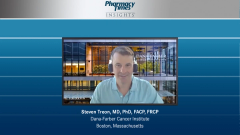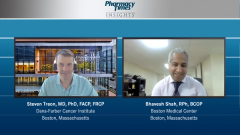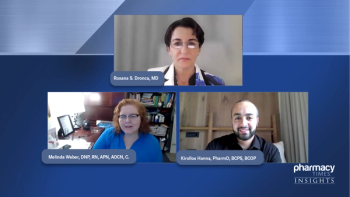
When to Initiate Therapy for Waldenstrom Macroglublinemia
The criteria used by hematologists and oncologists to guide decisions to initiate therapy for Waldenstrom macroglobulinemia vs monitor patients with active surveillance.
Episodes in this series

Bhavesh Shah, RPh, BCOP: In regard to treatment philosophy when you initiate treatments in patients, the NCCN [National Comprehensive Cancer Network] guidelines have certain criteria. How do you initiate treatment? When do you consider starting a patient on treatment?
Steven Treon, MD, PhD, FACP, FRCP: The NCCN guidelines actually emerged from our workshop guidelines. This meant having a lot of expert opinion. The first thing that’s important for pharmacists to know is that Jan Waldenstrom used to say, “Let well do.” By that, he’s trying to say that if the patient is feeling well and doesn’t have any important stigmata of the disease, then you watch and wait. Up to 30% of all patients with Waldenstrom macroglobulinemia can be watch-and-wait scenarios.
The NCCN guidelines define pivot points, like a hemoglobin of less than 100,000 g/dL because of disease. If the patient is having moderate-to-severe neuropathy because of the IgM [immunoglobulin M] being made by the tumor cells, or if they’re having symptomatic hyperviscosity or cold agglutinins or cryoglobulins, then it’s fair game to treat. But it’s important to recognize that there are a fair number of patients who meet the diagnostic criteria but are relatively asymptomatic. We tend to treat people who have very high IgM levels. If they’re above 6000 mg/dL, we’ll treat them, because the data that we have and published seem to suggest that they’re more likely to get into trouble than not. Therefore, why wait until somebody gets into trouble? Because the manifestations of hyperviscosity are sometimes irreversible, like bleeding in the retina. I had one patient who lost their vision, and another who had a stroke. Having a high viscosity level is not good. Why wait for the patient to declare themselves that way?
Bhavesh Shah, RPh, BCOP: Thank you for sharing that perspective. There are guidelines and there’s also clinician symptomology and perspective on treating a patient. It’s amazing to talk to an expert from where a lot of these guidelines came from. It’s great to add color to our discussion.
Transcript edited for clarity.
Newsletter
Stay informed on drug updates, treatment guidelines, and pharmacy practice trends—subscribe to Pharmacy Times for weekly clinical insights.













































































































































































































